The Camino de Santiago, as you may already know, offers a great diversity of routes, each composed of several stages. As you traverse the entire Spanish geography, with its different landscapes and terrains, some of these stages feature memorable inclines due to their difficulty. While some prefer descents to ascents, as they require less effort, many prefer the uphill climbs. Why? Some descents on the Camino de Santiago have significant gradients and even slippery terrain, posing a certain risk of falls and injuries. Thus, in this article, we want to talk about the toughest descents on the Camino de Santiago, which, according to the experience of our pilgrims, are among the most challenging.
The 10 most memorable descents for pilgrims
Just as on the various Jacobean routes, we encounter stages with “leg-breaking” ascents, perhaps a more fitting attribute for the descents on the Camino de Santiago. Extreme negative slopes and rocky or slippery terrain due to the presence of gravel or water are some of the pilgrim’s greatest enemies. In addition to the risk of falling, joint wear and tear such as knee and ankle strain are prominent during descents (as well as foot and toenail pain). Here, we present a selection of the ten toughest descents on the Camino de Santiago, which, though demanding, offer beautiful panoramic views.
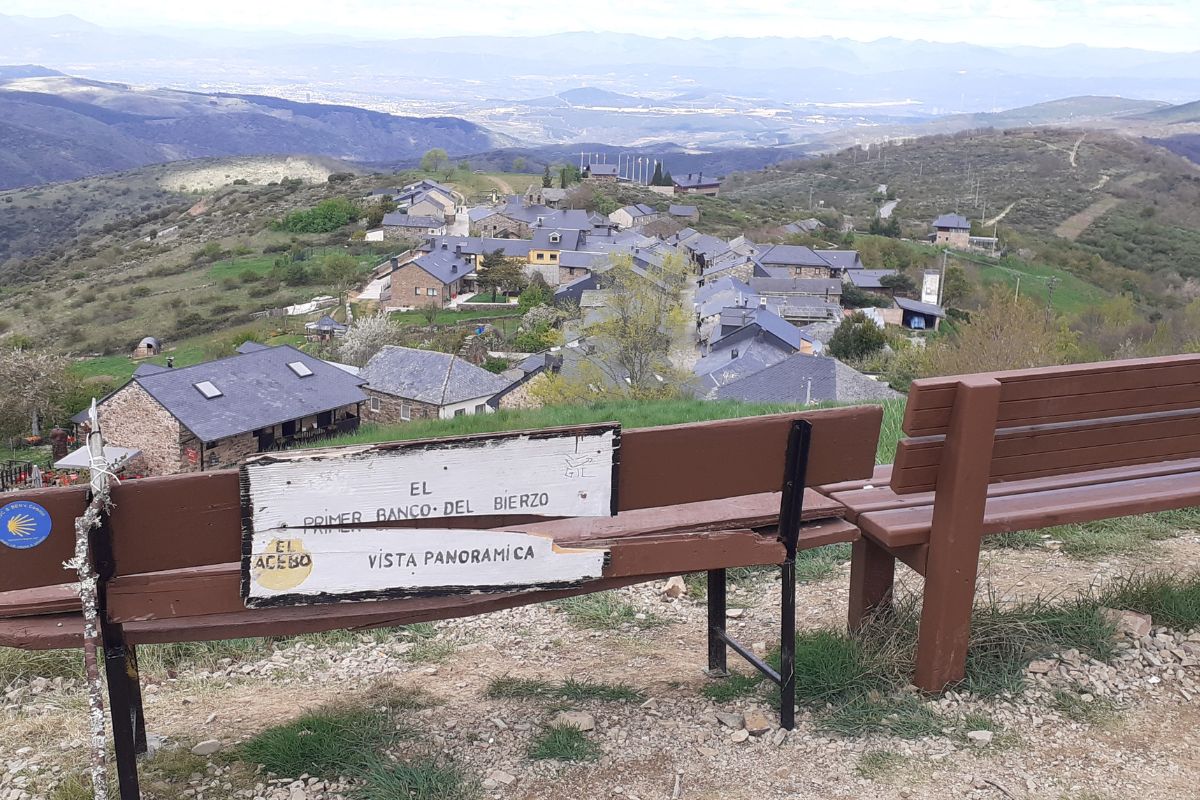
Panoramic view before a descent on the French Way
Descent from Alto del Perdón
On the French Way, between Pamplona and Puente La Reina, is one of the most talked-about descents by pilgrims and one of the toughest descents on the Camino. It’s one of the mythical ascents, with the ultimate reward of panoramic views and the famous sculptural ensemble honoring pilgrims. In just over 3 km, you descend about 260 meters from the summit to the town of Uterga. Despite not being very long, it’s very steep and the terrain is very rocky, so you have to be especially careful not to slip.
Descent to Molinaseca
Continuing on the French route, between Rabanal del Camino and Molinaseca, we find one of the highest points on the Camino, the Alto de Foncebadón. Crowned by the impressive Cruz de Ferro, what goes up must come down, and so it happens to the Camino after passing this milestone. In about 12 km, you descend about 1000 meters along paths that sometimes have slippery and loose rocky terrain. After passing through El Acebo and Riego de Ambrós, you finally arrive in Molinaseca, where you can rest your legs and knees by the river.
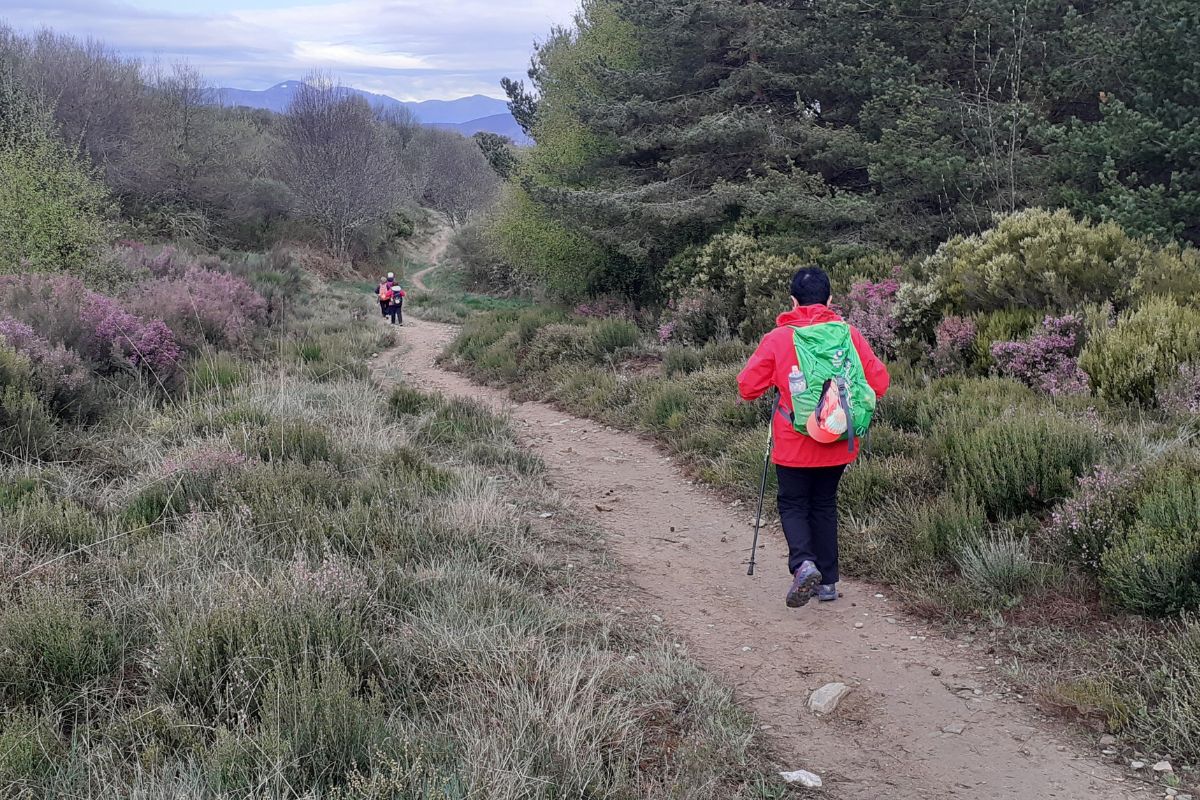
Pilgrims at the beginning of the descent from the Cruz de Ferro to Molinaseca
Descent to Santa Cruz de la Serós
On the French Way, in its Aragon variant (known as the Aragonese Way) starting in Spain at Somport, we encounter a very challenging stage. Commented on only among experienced pilgrims, the variant from Jaca to Arrés via the San Juan de la Peña variant has a dizzying descent. From the monastery of San Juan de la Peña to Santa Cruz de la Serós, there’s a 400-meter descent over 4 km. This stretch is only recommended for very seasoned walkers.
Descent to Montefurado
Now on the Primitive Way, famous for its elevation changes between Asturias and Galicia, we must highlight the descent from Puerto del Palo to Montefurado. This descent, between Pola de Allande and La Mesa, has a drop of about 230 meters in just over 1 km. The panoramic view from this point, the highest point of this route, deserves the efforts of both ascent and descent.
Descent to Grandas de Salime
Continuing in the heart of the first of the Ways, in the next stage. Between La Mesa and Grandas de Salime, the pilgrim has to face one of the toughest descents. Over just over 6 km, you descend more than 800 meters, starting shortly after leaving La Mesa and ending at the Grandas de Salime reservoir.
Descent to Redondela
The Portuguese Way is famous for not having large gradients, although there are some. Between O Porriño and Arcade is where we might encounter more ups and downs. After passing Santiaguiño, a short distance from Redondela, the pilgrim faces a descent of about 150 meters in 1.5 km. The terrain isn’t complicated, as it’s asphalt, but you still need to be very cautious.
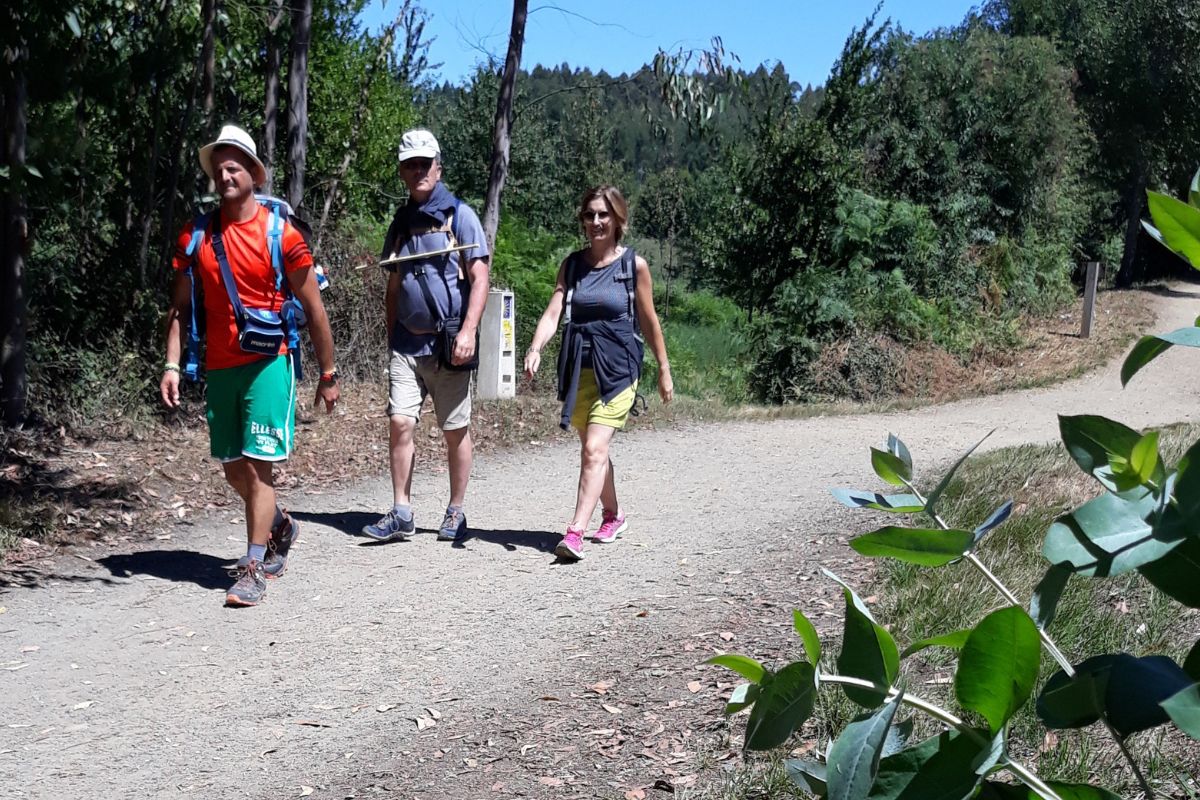
Pilgrims getting ready for the tough descent to Armenteira, on the Spiritual Variant
Descent to Markina-Xemein
On the Northern Way, we must highlight the stage between Deva and Markina-Xemein. This route, with many gradients, presents its toughest descent in this inland stage. At the height of Mount Akarregi, you descend about 320 meters in 3 km in the final stretch of the stage. Special attention should be paid to the rocky terrain.
Descent to Cee
The Finisterre Way experiences the same as the Portuguese route, with not many gradients. However, we can highlight a very interesting descent in the stage between Olveiroa and Cee. Before reaching this last town, passing the cruceiro da Armada, in 2.5 km you descend about 250 meters to practically sea level. Don’t let the beauty of the view of the spectacular Cape Finisterre distract you, and pay attention to the descent, as it has some gravel.
Descent to Muxía
Back on the Finisterre and Muxía Way, and reaching this coastal village, another interesting descent awaits us. After finishing the ascent of Vilela de Morquintián, the pilgrim has to make a descent of nearly 250 meters over about 5 km.
Descent to Armenteira
On the Spiritual Variant, in its first stage between Pontevedra and Armenteira, there is a beautiful descent to reach the monastery of Armenteira. After leaving the beautiful village of Combarro and ascending to Cribo, the pilgrim faces a descent of 200 meters in just over 2 km.
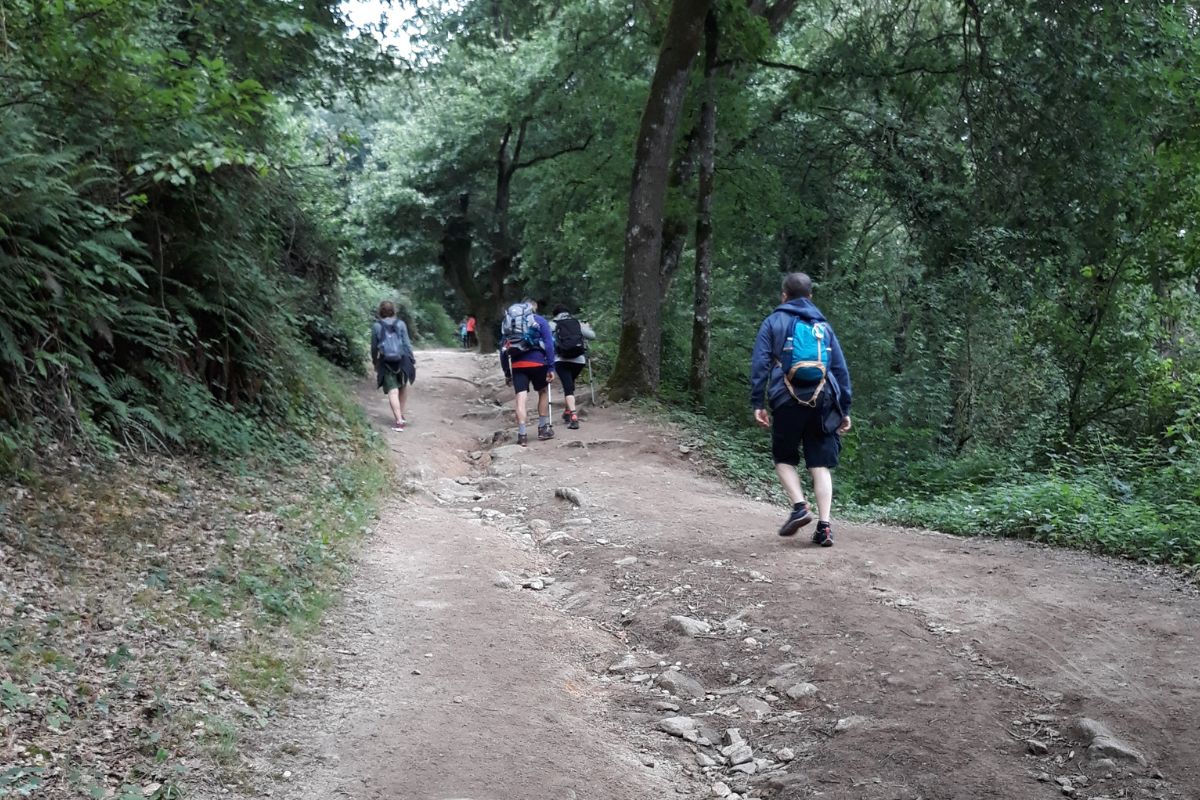
Pilgrims descending to Armenteira
Avoid falls and injuries on descents
We want you to enjoy it to the fullest, so if you are going to tackle some of the toughest descents on the Camino, we recommend that you prepare adequately. Proper training beforehand will be necessary to tackle these descents of the Camino de Santiago. To prevent falls and protect your joints, we recommend bringing good walking sticks, knee pads, ankle supports, and suitable boots that protect the ankles.
Oh! And once you arrive in Santiago de Compostela, we won’t forgive you for one of the most intense descents of the Camino de Santiago. It’s the origin of everything, and it cannot be overlooked: the descent to the Apostle’s tomb. This descent, intense on an emotional level, must not be missed as the final celebration of your experience on the Camino de Santiago.

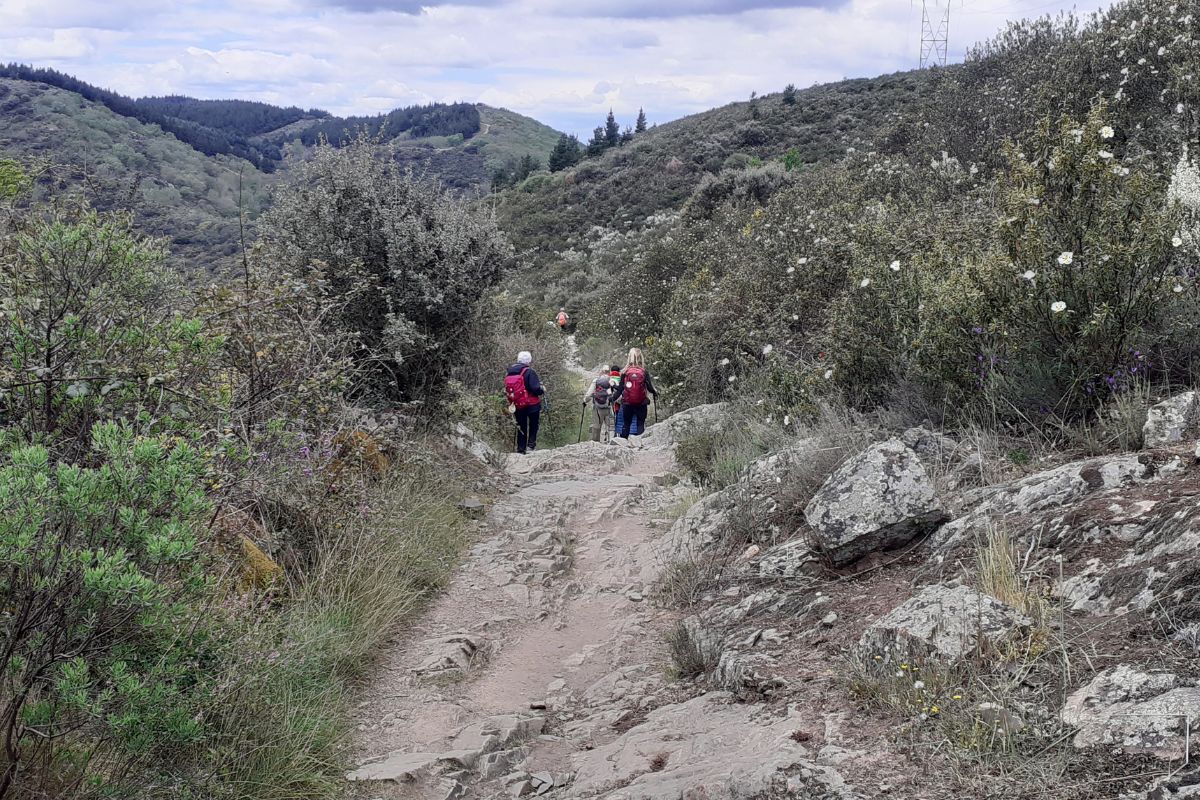










Leave A Comment